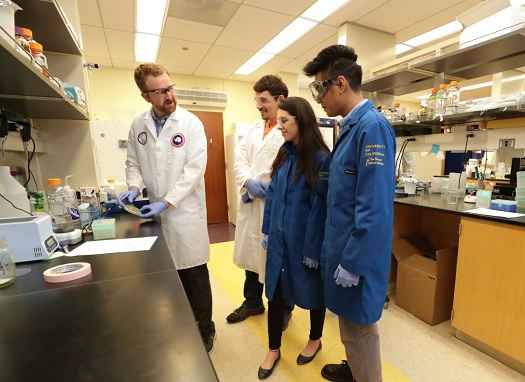
University of California-Riverside (UCR) scientists have discovered a tiny worm species that infects and kills insects.
This new species is a member of a family of nematodes called Steinernema that have long been used in agriculture to control insect parasites.
UCR nematology professor Adler Dillman, whose lab made the discovery, said they are “always on the lookout for new (Steinernema species) because each has unique features. Some might be better in certain climates or with certain insects.”
Hoping to gain a deeper understanding of a different Steinernema species, Dillman’s laboratory requested samples from colleagues in Thailand. “We did DNA analysis on the samples and realized they weren’t the ones we had requested. Genetically, they didn’t look like anything else that has ever been described,” Dillman said.

Dillman and his colleagues have now described the new species in the Journal of Parasitology. They are nearly invisible to the naked eye, about half the width of a human hair and just under 1 millimeter long. They’ve named the new species Steinernema adamsi after the American biologist Byron Adams, Biology Department chair at Brigham Young University.
“Adams has helped refine our understanding of nematode species and their important role in ecology and recycling nutrients in the soil,” Dillman said. Adams, who is currently doing research on nematodes in Antarctica, said he is honored to have such a “cool” species bear his name in the scientific literature.
As juveniles, nematodes live in the soil with sealed mouths, in a state of arrested development. In that stage, they wander the soil looking for insects to infect. Once they find a victim, they enter the mouth or anus and defecate highly pathogenic bacteria. Within 48 hours of infection, the insect dies.
“It essentially liquefies the insect, then you’re left with a bag that used to be its body. You might have 10 or 15 nematodes in a host, and 10 days later you have 80,000 new individuals in the soil looking for new insects to infect,” Dillman said.
The researchers are certain that S. adamsi kills insects. They confirmed this by putting some of them in containers with wax moths. “It killed the moths in two days with a very low dose of the worms,” Dillman said.
Going forward, the researchers hope to discover the nematode’s unique properties. “We don’t know yet if it can resist heat, UV light, or dryness. And we don’t yet know the breadth of insects it is capable of infecting.”
However, S. adamsi are members of a genus that can infect hundreds of types of insects. Therefore, the researchers are confident it will be beneficial on some level whether it turns out to be a specialist or a generalist parasite of multiple types of insects.
“This is exciting because the discovery adds another insect-killer that could teach us new and interesting biology,” Dillman said. “Also, they’re from a warm, humid climate that could make them a good parasite of insects in environments where currently, commercially available orchard nematodes have been unable to flourish.”